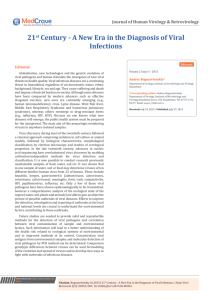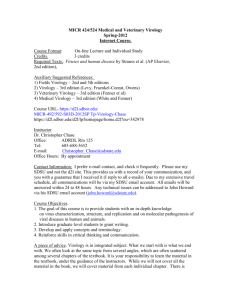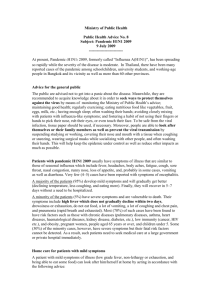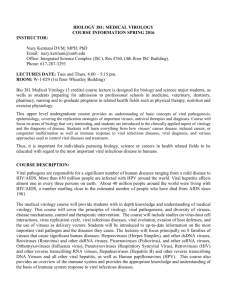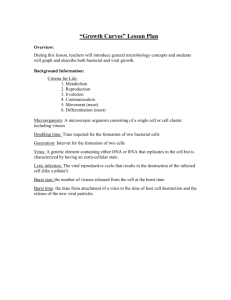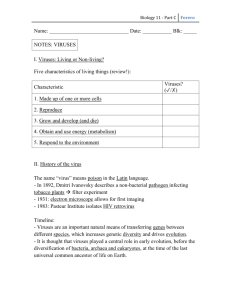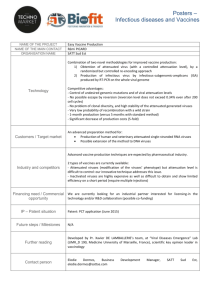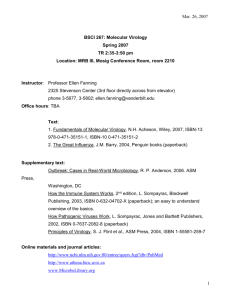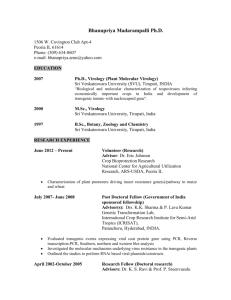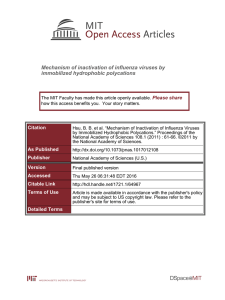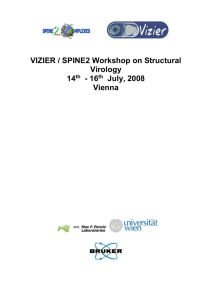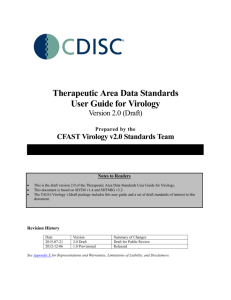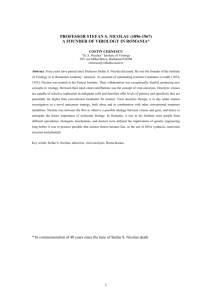Viral Discovery by Next
advertisement
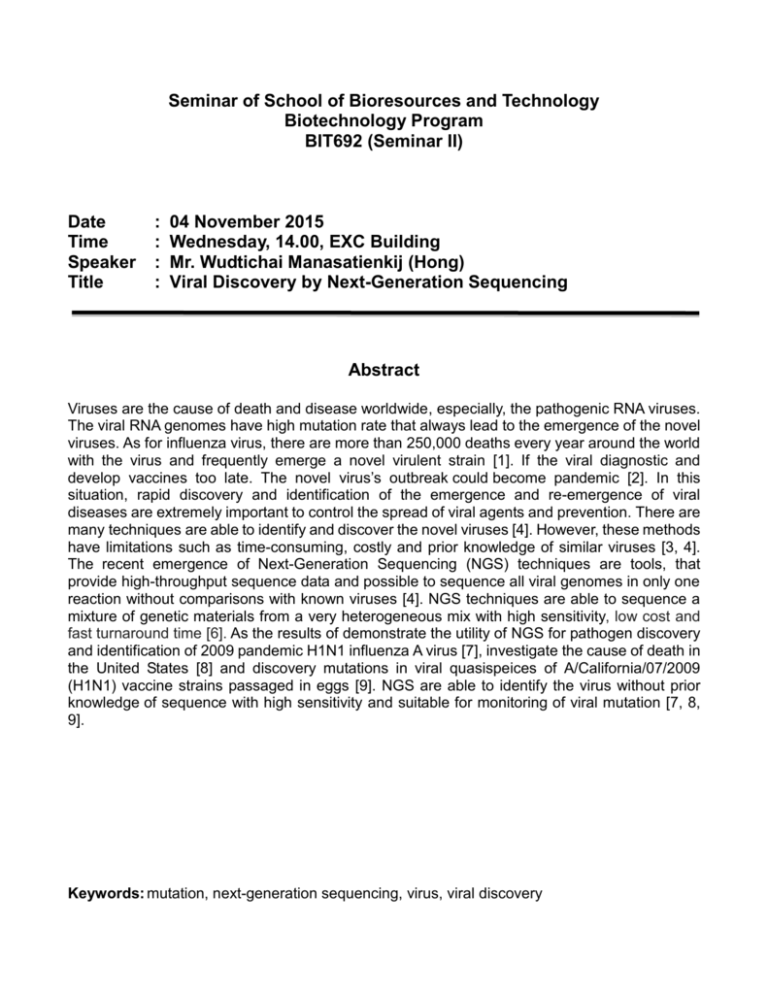
Seminar of School of Bioresources and Technology Biotechnology Program BIT692 (Seminar II) Date Time Speaker Title : : : : 04 November 2015 Wednesday, 14.00, EXC Building Mr. Wudtichai Manasatienkij (Hong) Viral Discovery by Next-Generation Sequencing Abstract Viruses are the cause of death and disease worldwide, especially, the pathogenic RNA viruses. The viral RNA genomes have high mutation rate that always lead to the emergence of the novel viruses. As for influenza virus, there are more than 250,000 deaths every year around the world with the virus and frequently emerge a novel virulent strain [1]. If the viral diagnostic and develop vaccines too late. The novel virus’s outbreak could become pandemic [2]. In this situation, rapid discovery and identification of the emergence and re-emergence of viral diseases are extremely important to control the spread of viral agents and prevention. There are many techniques are able to identify and discover the novel viruses [4]. However, these methods have limitations such as time-consuming, costly and prior knowledge of similar viruses [3, 4]. The recent emergence of Next-Generation Sequencing (NGS) techniques are tools, that provide high-throughput sequence data and possible to sequence all viral genomes in only one reaction without comparisons with known viruses [4]. NGS techniques are able to sequence a mixture of genetic materials from a very heterogeneous mix with high sensitivity, low cost and fast turnaround time [6]. As the results of demonstrate the utility of NGS for pathogen discovery and identification of 2009 pandemic H1N1 influenza A virus [7], investigate the cause of death in the United States [8] and discovery mutations in viral quasispeices of A/California/07/2009 (H1N1) vaccine strains passaged in eggs [9]. NGS are able to identify the virus without prior knowledge of sequence with high sensitivity and suitable for monitoring of viral mutation [7, 8, 9]. Keywords: mutation, next-generation sequencing, virus, viral discovery REFERENCES 1. Shrestha, S. S., Swerdlow, D. L., Borse, R. H., Prabhu, V. S., Finelli, L., Atkins, C. Y. and Meltzer, M. I., 2011, “Estimating the burden of 2009 pandemic influenza A (H1N1) in the United States (April 2009–April 2010)”, Clinical Infectious Diseases, Vol. 52, No. 1, pp. 75-82. 2. Anthony, S. F., 2006, “Pandemic influenza threat and preparedness”, Emerging Infectious Diseases, Vol. 12, No. 1, pp. 73-77. 3. Mokili, J. L., Rohwer, F., and Dutilh, B. E., 2012, “Metagenomics and future perspectives in virus discovery”, Current Opinion in Virology, Vol. 2, No. 1, pp. 63-77. 4. Chiu, C. Y., 2013, “Viral pathogen discovery”, Current Opinion in Microbiology, Vol. 16, No. 4, pp. 468-478. 5. Datta, S., Budhauliya, R., Das, B., and Chatterjee, S., 2015, “Next-generation sequencing in clinical virology: Discovery of new viruses”, World Journal of Virology, Vol. 4, No. 3, pp. 265-277. 6. Radford, A. D., Chapman, D., Dixon, L., Chantrey, J., Darby, A. C. and Hall, N., 2012, “Application of next-generation sequencing technologies in virology”, Journal of General Virology, Vol. 93, No. 9, pp. 1853-1868. 7. Greninger, A. L., Chen, E. C., Sittler, T., Scheinerman, A., Roubinian, N., Yu, G. and Chiu, C. Y., 2010, “A metagenomic analysis of pandemic influenza A (2009 H1N1) infection in patients from North America”, Public Library of Science One, Vol. 5, No. 10, e13381. 8. Kosoy, O. I., Lambert, A. J., Hawkinson, D. J., Pastula, D. M., Goldsmith, C. S., Hunt, D. C. and Staples, J. E., 2015, “Novel Thogotovirus Associated with Febrile Illness and Death, United States, 2014”, Emerging Infectious Diseases, Vol. 21, No. 5, pp. 760-764. 9. Majid, L., Zagorodnyaya, T., Plant, E. P., Petrovskaya, S., Bidzhieva, B., Ye, Z. and Chumakov, K., 2015, “Deep Sequencing for Evaluation of Genetic Stability of Influenza A/California/07/2009 (H1N1) Vaccine Viruses”, Public Library of Science One, Vol. 10, No. 9, e0138650.

